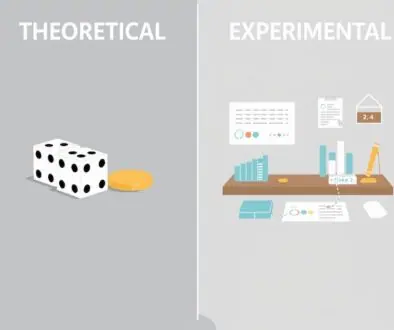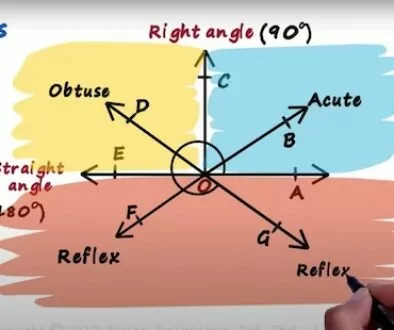How to Add, Subtract and Multiply and Divide Fractions – With Videos and Examples
Most of the teachers will teach you how you can add and subtract fractions before they teach you how you can multiply them. However, the easy way to learn it in reverse order. Let’s see how it works.
You can also try our Fraction Calculator
How to Multiply Fractions
Question:- Multiply 3⁄2 and 5⁄4
Answer:
What was the trick: Nothing. Just add the top number and the bottom numbers and you are done.
Question: Multiply 2⁄6 and 8⁄2 and 4⁄5
Answer: Let’s simplify those numbers that can be simplified (Or you can do it after multiplication. It’s up to you when you want to simplify. Since it’s multiplication, so it doesn’t matter when you do it.)
2⁄6 after simplification = 1⁄3
8⁄2 after simplification = 4⁄1
Let’s multiply now:
1⁄3 X 4⁄1 X 4⁄5= 16⁄15
We again just multiplied the top numbers and bottom numbers.
How to Divide Fractions
Again it’s an easy one. If you know how to multiply, you already know how to divide. Let’s see how.
Question: Solve this: 3/8 ÷ 4/7
Solution:
For understanding: All you have to do is turn the value of the second fraction. For example, 4/7 will be 7/4 then multiply fractions and you get the answer.
so, 3/8 x 7/4
=> 21/32
simply them wherever needed.
Another Question: Solve this 10/4 ÷ 8/5
Solution:
10/4 ÷ 8/5
=> 10/4 x 5/8
=> 50/32
=> 25/16
Adding and Subtracting Like Fraction
How to add Fractions when the bottom numbers are the same? Or How to Add Fractions with Like Denominators or Identical Denominators?
The same question said in 2 ways. The same bottom numbers are known as Identical or Like Denominators.
Question: Add 1⁄2 and 3⁄2
Answer: 2
Clarification: So the answer is 4⁄2 that. you can further simplify and it will be 2⁄1 and we will write it as 2 because 1 on the bottom is meaningless.
Question: Add 3⁄2 and 7⁄2 and 4⁄2
Answer:
Tip: You can simplify 4⁄2 but we won’t do it before addition. If we do, we will lose the common bottom value from our third fraction that is 2. So we are going to simplify later after the addition process is complete.
So, 3⁄2 + 7⁄2 + 4⁄2
=> 14⁄2
(We just added top numbers and took 2 as a common number for the bottom because they all have the same number on the bottom)
=> Simplify 14⁄2 and you will get 7⁄1 that will be written as 7
So, 7 is the answer to the question.
Subtracting Fraction when Bottom Value is the same (Like Denominators or identical Denominator)
Subtracting Fraction works the same way that we said about Adding subtraction.
- When both fractions have the same value on the bottom, we take it as a common value and subtract the top numbers.
Question: Subtract 1⁄3 from 4⁄3 (Or get the value of 4⁄3 – 1⁄3)
Answer:
Clarification: As we said, when the bottom value is the same for both numbers, we take it as common. So we took 3 as common for the bottom value. We subtracted 4 – 1 to get the top value. So we got 3⁄3. Then we simplified 3⁄3 and got 1 as the final value that is the answer.
Whether it’s 2 values or 3 or 4, we will apply the same method when the bottom value is the same.
Question: Get the value for 2⁄3 – 1⁄3 – 6⁄3
Answer:
Tip: Don’t simplify before subtraction, else the bottom value for the third fraction will change.
Take 3 as common for the bottom value and subtract 2 – 1 – 6.
So we get => -5⁄3
Adding and Subtracting Unlike Fraction
How to add and subtract unlike or un-identical fraction (When the bottom values are not the same for both numbers)
Let’s solve some examples to see it in action.
Question: Get the value of 2⁄7 + 1⁄3
Answer: Since the bottom value for both is not the same, so we need to convert them to Like fractions. But, how do we do this? It’s very easy.
How to Convert Unlike Fraction to Like Fraction:
Take the bottom value of the first fraction and then multiply it with the top and bottom value of the second fraction. And, also take the bottom value of the second fraction and multiply it with the top and bottom value of the first fraction.
So our question was to get the value of 2⁄7 + 1⁄3
so we are going to multiply 3⁄3 with 2⁄7 and 7⁄7 with 1⁄3
=> 3⁄3 x 2⁄7 + 1⁄3 x 7⁄7
=> 6⁄21 + 7⁄21
Now we have like fractions. We are ready to add them as we added like fractions under like fraction section above.
Take 21 as a common value for the bottom because both fractions have 21 on the bottom and will add the top values
So, 6⁄21 + 7⁄21
= 13⁄21
Another Question: Get the value of 2⁄7 – 1⁄3
Answer: We will do the same way here.
2⁄7 – 1⁄3
=> 3⁄3 x 2⁄7 – 1⁄3 x 7⁄7
=> 6⁄21 – 7⁄21
=> -1⁄21
What if we have more than 2 fractions to add or subtract?
How to Add and Subtract Unlike Fractions that have more than 2 Values
This method can also be used to add and subtract fractions that have only 2 values, but the above-mentioned method was the easy one, so we didn’t discuss it there.
How to add these: 3⁄2 + 7⁄4 + 4⁄3
First, we need to get the LCD (Least Common Denominator)
How to get the Least Common Denominator (LCD)?
Multiply the bottom numbers with 2, 3, 4, and so on… until you find the Least Common Denominator for all 3.
| 2 | 4 | 3 | |
| 2 x | 4 | 8 | 6 |
| 3 x | 6 | 12 | 9 |
| 4 x | 8 | 16 | 12 |
| 5 x | 10 | 20 | 15 |
| 6 x | 12 | 24 | 18 |
Our Least Common Denominator is 12 because 12 is the only number available in all 3 columns that we have highlighted in gree color.
Our question was 3⁄2 + 7⁄4 + 4⁄3 where
- The first bottom value is 2 that we multiplied with 6 to get the Least Common Denominator (look at the table above), so we are going to multiply 3⁄2 with 6⁄6. So it will be: 3⁄2 x 6⁄6
- The second bottom value is 4 that we multiplied with 3 to get the LCD (look at the table above), so we are going to multiply 7⁄4 with 3⁄3. So it will be: 7⁄4 x 3⁄3
- The third bottom value is 3 that we multiplied with 4 to get the LCD (look at the table above), so we are going to multiply 4⁄3 with 4⁄4. So it will be: 4⁄3 x 4⁄4
S0, 3⁄2 + 7⁄4 + 4⁄3
=> 3⁄2 x 6⁄6 + 7⁄4 x 3⁄3 + 4⁄3 x 4⁄4
Remember that we always multiply first in math before addition or subtraction. That’s math rule.
After simplification we get: 18⁄12 + 21⁄12 + 16⁄12
Now we have like fractions (Bottom value for all fractions are the same). So we will take 12 as common for the bottom and add top numbers.
So, 18⁄12 + 21⁄12 + 16⁄12
= 55⁄12
So the answer is 55⁄12
Another Question: Subtract 5⁄6 – 1⁄2 – 7⁄9
| 6 | 2 | 9 | |
| 2 x | 12 | 4 | 18 |
| 3 x | 18 | 6 | 27 |
| 4 x | 24 | 8 | 36 |
| 5 x | 30 | 10 | 45 |
| 6 x | 36 | 12 | 54 |
| 7 x | 42 | 14 | 63 |
| 8 x | 48 | 16 | 72 |
| 9 x | 54 | 18 | 81 |
So the least common denominator for bottom values (6, 2, and 9) is 18.
Now we are going to multiply each fraction the same way we did in the above question looking at the table.
- 5⁄6 will be multiplied with 3⁄3
- 1⁄2will be multiplied with 9⁄9
- 7⁄9 will be multiplied with 2⁄2
S0, 5⁄6 – 1⁄2 – 7⁄9
=> 5⁄6 x 3⁄3 – 1⁄2 x 9⁄9 – 7⁄9 x 2⁄2
=> 15⁄18 – 9⁄18 – 14⁄18
Now we have like fractions. So we will take 18 as common value for the bottom and subtract top numbers.
=> -8⁄18
=> -4⁄9
How about adding or Subtracting Fractions that have large numbers?
Question:- Get the value for 35⁄105 + 70⁄80 + 42⁄90
Tip:- When the bottom values for fractions are not the same. You should always simplify them first before calculating. This will save you time.
Let’s Simplify: 35⁄105 + 70⁄80 + 42⁄90
and you will get: 1⁄5 + 7⁄8 + 7⁄15
Now we need to get the Least Common Denominator for 5, 8 and 15
| 5 | 8 | 15 | |
| 2 x | 10 | 16 | 30 |
| 3 x | 15 | 24 | 45 |
| 4 x | 20 | 32 | 60 |
| 5 x | 25 | 40 | 75 |
| 6 x | 30 | 48 | 90 |
| 7 x | 35 | 56 | 105 |
| 8 x | 40 | 64 | 120 |
| 9 x | 45 | 72 | 135 |
| 10 x | 50 | 80 | 150 |
| 11 x | 55 | 88 | 165 |
| 12 x | 60 | 96 | 180 |
| 13 x | 65 | 104 | 195 |
| 14 x | 70 | 112 | 210 |
| 15 x | 75 | 120 | 225 |
| 16 x | 80 | 128 | 240 |
| 17 x | 85 | 136 | 255 |
| 18 x | 90 | 144 | 270 |
| 19 x | 95 | 152 | 285 |
| 20 x | 100 | 160 | 300 |
| 21 x | 105 | 168 | 315 |
| 22 x | 110 | 176 | 330 |
| 23 x | 115 | 184 | 345 |
| 24 x | 120 | 192 | 360 |
So we got 120 as the Least Common Denominator (LCD) for 5, 8, and 15
- 1⁄5 will be multiplied with 24⁄24
- 7⁄8 will be multiplied with 15⁄15
- 7⁄15 will be multiplied with 8⁄8
So, it will be written like this: 1⁄5 x 24⁄24 + 7⁄8 x 15⁄15 + 7⁄15 x 8⁄8
=> 24⁄120 + 105⁄120 + 56⁄120
Now we have like fractions. We will take 120 as a common value for the bottom and add top values.
=> 185⁄120
=> After simplifying, you get: 37⁄24
so our answer is 37⁄24
Any other problems? Feel free to comment.






